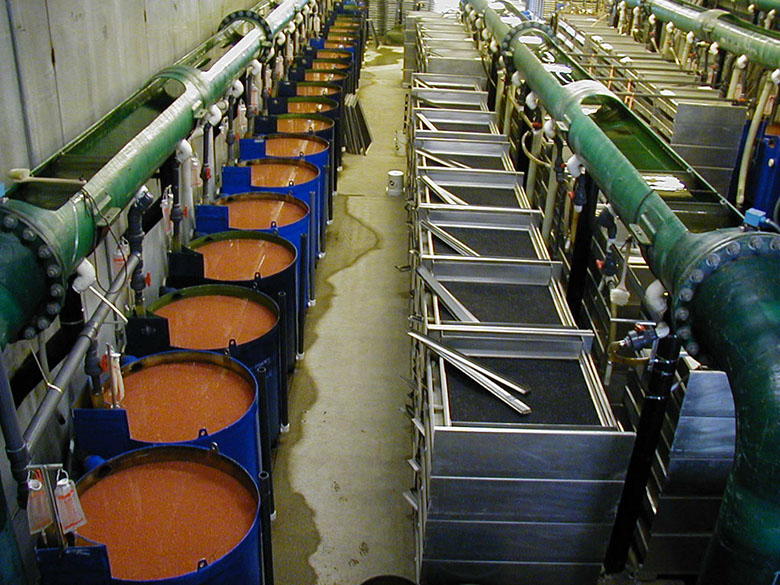An early season hatchery chum run important to the Southeast Alaska commercial purse seine fleet is being called a huge disappointment and has closed to fishing because of a poor return.
The Sitka-based Northern Southeast Regional Aquaculture Association, or NSRAA operates the Hidden Falls hatchery on eastern Baranof Island. Returns there averaged 1.7 million fish last decade and soared as high as four million in the 1990s. The forecast for this year’s return was for just over a million fish. However, NSRAA general manager Steve Reifenstuhl is calling the Hidden Falls run a disaster. “I think we have another run failure, worse than last year is the way it’s looking,” Reifenstuhl said Wednesday. “We only had 32,000 fish caught in the first three openings. So we had to close it down. And now our focus is to make sure we have enough broodstock.”
Broodstock fish are recovered by the hatchery to collect eggs to produce the next generation for Hidden Falls and several other NSRAA release sites. The hatchery had a target of 180,000 chums for broodstock this year but is not sure about hitting that target. Reifenstuhl said it’s difficult to assess numbers of fish that will be available to collect for broodstock. Estimates from flights over the area range from 50,000 to 100,000 fish that have returned to Hidden Falls.
“I think that we will ultimately get the broodstock we need but it’s certainly on pins and needles at this time,” Reifenstuhl said.
The broodstock target is expanded this year because of an increase in NSRAA’s planned production from the Hidden Falls eggs. The hatchery organization is hoping to release 55 million chum fry from this year’s egg take at a new remote release site in Southeast Cove near Kake, 100 million at two sites on Baranof Island near Hidden Falls and another 24 million in Deep Inlet near Sitka.
Reifenstuhl thinks humpback whales and possibly Pollock are eating the young fish near Hidden Falls after they’re reared and released. “How much it’s whales and Pollack or other predators, I don’t know. But we’re surrounded by chum programs that are really doing well this year. (Douglas Island Pink and Chum) is having a great return and it looks like Neets Bay chum program out of the Ketchikan area is also starting off very strong.”
Reifenstuhls says NSRAA may have to look at other options, including timing and location, for releasing Hidden Falls chums in the future to avoid predation.
With the seine fishery closed around Hidden Falls, some of region’s seine fleet is heading to the Juneau area to fish for a different run of hatchery chums. An opening was planned in Amalga Harbor Thursday, July 9 for a chance to catch some this year’s return to Douglas Island Pink and Chum, or DIPAC. Reifenstuhl calls it “highly unlikely” the seine fleet will get to fish for Hidden Falls chums again this year.
Hatchery dog salmon in Southeast give the seine fleet a chance to fish in the early summer season, before pink salmon start returning in big numbers. The hatchery chums also take some fishing pressure off wild pink returns in years of lower humpy numbers. That’s not the case this year with a big run of pinks forecast for Southeast, although those fish are just starting to show up in the seine fleet catches.
In related news, the first chums are expected back to NSRAA’s new remote release site at Southeast Cove. NSRAA expects a small number of three-year old dog salmon to return to Kuiu Island near Kake this year. The first major return for that program is not expected until next year.











